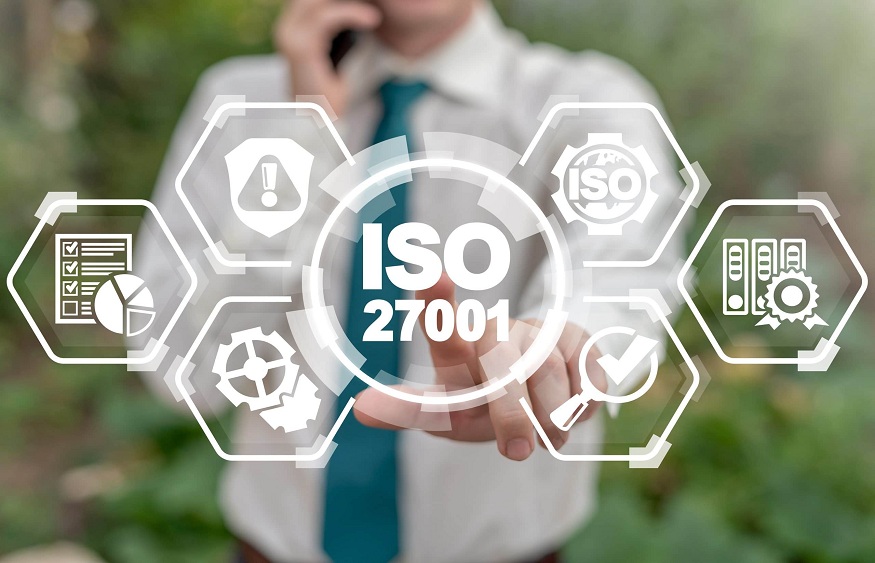ISO 27001 Certification: Safeguarding Information Security in the Digital Age
In today’s fast-paced digital world, the protection of sensitive information has become a critical concern for organizations. With the increasing number of cyber threats and data breaches, establishing robust information security measures is paramount. This is where ISO 27001 Certification comes into play. ISO 27001 is an internationally recognized standard for information security management systems (ISMS). It provides organizations with a comprehensive framework to effectively safeguard their valuable data and mitigate risks. In this blog, we will explore What is ISO 27001 and explore how it enables organizations to navigate the challenges of information security in the digital age.
Table of Contents

- What is ISO 27001?
- Benefits of ISO 27001 Certification
- Implementing ISO 27001
- Conclusion
What is ISO 27001?
ISO 27001 is an internationally recognized standard for Information Security Management Systems (ISMS). It provides a systematic approach to managing and protecting sensitive information within organizations. The standard sets out the requirements for establishing, implementing, maintaining, and continually improving an ISMS.
ISO 27001 follows a risk-based approach to information security, focusing on identifying potential threats and vulnerabilities and implementing appropriate controls to mitigate them. It encompasses various aspects of information security, including organizational security, asset management, human resource security, access control, cryptography, physical and environmental security, operations security, communications security, and supplier relationships.
Organizations that adopt ISO 27001 demonstrate their commitment to information security by aligning their processes with the standard’s requirements. This includes establishing a robust framework for managing risks, implementing security controls, and ensuring employee awareness and training.
Obtaining ISO 27001 Certification brings several benefits. It enhances overall security by mitigating risks and reducing the likelihood of breaches. It helps organizations comply with legal and regulatory requirements related to information security. Certification also builds customer confidence and trust, as it demonstrates an organization’s commitment to protecting sensitive information. Additionally, ISO 27001 Certification can provide a competitive advantage, showcasing an organization’s dedication to maintaining a high level of information security.
In the digital age, ISO 27001 Certification plays a crucial role in safeguarding information assets and ensuring organizations are well-prepared to face the evolving threats and challenges of the modern world.
Benefits of ISO 27001 Certification
ISO 27001 Certification brings several advantages to organizations in safeguarding their information assets and demonstrating a commitment to information security.
- Enhanced Security: ISO 27001 provides a comprehensive framework for assessing risks, implementing controls, and managing information security effectively. By aligning with the standard’s requirements, organizations can enhance their overall security posture, reducing the likelihood of breaches and data leaks.
- Compliance: ISO 27001 Certification helps organizations meet legal and regulatory requirements related to information security. It ensures that organizations adhere to the necessary standards and demonstrate their dedication to protecting sensitive information.
- Customer Confidence: ISO 27001 Certification is a globally recognized symbol of trust and commitment to information security. It reassures customers that their data is being handled and protected appropriately, fostering confidence in the organization.
- Competitive Advantage: ISO 27001 Certification can give organizations a competitive edge. It demonstrates their commitment to maintaining a high level of information security, which can be a crucial factor for customers when selecting service providers or partners.
- Risk Management: ISO 27001 emphasizes a risk-based approach to information security. By implementing the standard’s requirements, organizations can identify and assess potential risks, implement controls to mitigate them, and establish a proactive risk management system.
- Improved Processes: ISO 27001 Certification requires organizations to document policies, procedures, and processes related to information security. This leads to improved internal processes, standardized practices, and better alignment of information security efforts across the organization.
- Supplier Trust: ISO 27001 Certification positively impacts supplier relationships. It demonstrates that an organization has implemented robust information security measures, fostering trust and stronger partnerships with suppliers.
Implementing ISO 27001
Implementing ISO 27001 involves a series of crucial steps that organizations must follow to establish an effective Information Security Management System (ISMS).
- Scope Definition: Begin by defining the scope of the ISMS. Identify the assets, processes, and departments that will be included in the certification scope. This helps determine the boundaries within which the ISMS will operate and the information that needs protection.
- Risk Assessment: Conduct a comprehensive risk assessment to identify potential threats and vulnerabilities to information security. Evaluate the likelihood and impact of each risk to prioritize them effectively. This assessment provides the foundation for implementing appropriate controls.
- Risk Treatment: Develop and implement controls to mitigate identified risks. These controls can include technical measures (e.g., encryption, firewalls), policies and procedures (e.g., access control, incident response), and employee training. The aim is to reduce the level of risk to an acceptable level.
- Documentation: Create necessary documentation to support the implementation of the ISMS. This includes an information security policy, risk assessment reports, control procedures, and any other relevant documentation. Proper documentation ensures consistency, provides guidance, and serves as a reference for managing the ISMS effectively.
- Training and Awareness: Train employees on information security policies, procedures, and their roles and responsibilities. It is crucial to create a culture of security awareness where employees understand the importance of information security and actively participate in maintaining it.
- Internal Auditing: Conduct regular internal audits to assess the effectiveness of the ISMS. Internal audits help identify any gaps or areas for improvement and ensure that the ISMS remains aligned with ISO 27001 requirements. This process provides an opportunity to refine and enhance the system continually.
- Management Review: Conduct periodic management reviews to evaluate the performance of the ISMS. Management reviews involve assessing the effectiveness of controls, reviewing audit findings, and identifying opportunities for improvement. The review helps ensure that the ISMS remains relevant and aligned with the organization’s goals and objectives.
- Certification Audit: Engage a certification body to perform an external audit of the ISMS. The certification audit assesses the organization’s compliance with ISO 27001 requirements. If successful, the organization is awarded ISO 27001 Certification, signifying its commitment to information security.
- Continual Improvement: Maintain a cycle of continual improvement for the ISMS. Regularly review and update policies, procedures, and controls based on changes in the organization’s environment and emerging threats. Stay updated with the latest developments in information security to ensure that the ISMS remains robust and effective over time.
Conclusion
Implementing ISO 27001 is crucial for organizations aiming to safeguard their information assets. By following the defined steps and establishing an effective ISMS, organizations can enhance security, mitigate risks, comply with regulations, and build trust among stakeholders in the digital age.






















